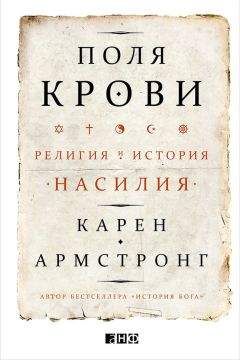444
Hazony, Philosophy of Hebrew Scripture, p. 121
Ibid., pp. 122–26
Быт. 12:10
Быт. 26:12–22; ср. 36: 6–8
Быт. 41:57–42:3
Быт. 37:7
Быт. 37:8
Быт. 37:10
Быт. 41:51
Быт. 41:48–49
Быт. 47:13–14, 20–21
Быт. 50:4–9. После смерти Иакова братьям разрешили похоронить отца в Ханаане. В Ханаан они отправились в сопровождении большой свиты с колесницами и кавалерией, а их дети и собственность оставались заложниками в Египте
Быт. 12:15; 20:2; 26:17–18; 14:11–12; 34:1–2; Hazony, Philosophy of Hebrew Scripture, pp. 111–13, 143
Быт. 14:21–25
Быт. 18:1–8; 19:1–9
Быт. 18:22–32
Быт. 49:5–7
Быт. 49:8–12; 44:18–34
Исх. 1:11, 14
Исх. 2:11
Hazony, Philosophy of Hebrew Scripture, pp. 143–44
Исх. 24:9–11
Исх. 31:18
Ср. Исх. 24:9–31:18; William M. Schniedewind, How the Bible Became a Book: The Textualization of Ancient Israel (Cambridge, UK, 2004), pp. 121–34
Напр., Суд. 1; 3:1–6; Ездр. 9:1–2
Regina Schwartz, The Curse of Cain: The Violent Legacy of Monotheism (Chicago, 1997); Hector Avalos, Fighting Words: The Origins of Religious Violence (Amherst, NY, 2005)
Mark S. Smith, The Early History of God: Yahweh and the Other Deities in Ancient Israel (New York and London, 1990); Smith, The Origins of Biblical Monotheism: Israel’s Polytheistic Background and the Ugaritic Texts (New York and London, 2001)
Нав. 24; S. David Sperling ‘Joshua 24 Re-examined’, Hebrew Union College Annual 58 (1987); Sperling, The Original Torah: The Political Intent of the Bible’s Writers (New York and London, 1998), pp. 68–72; John Bowker, The Religious Imagination and the Sense of God (Oxford, 1978), pp. 58–68
Исх. 20:3
Susan Niditch, War in the Hebrew Bible: A Study of the Ethics of Violence (New York and Oxford, 1993), pp. 28–36; 41–62; 152
Ср. аналогичную сделку в Числ. 21:2
Нав. 6:20
Нав. 8:25
Нав. 8:28
Lauren A. Monroe, Josiah’s Reform and the Dynamics of Defilement: Israelite Rites of Violence and the Making of a Biblical Text (Oxford, 2011), pp. 45–76
Стела Меши, 15–17. см.: текст в: Kent P. Jackson, ‘The Language of the Mesha Inscription’, in Andrew Dearman, ed., Studies in the Mesha Inscription and Moab (Atlanta, 1989), p. 98; Norman K. Gottwald, The Politics of Ancient Israel (Louisville, 2001), p. 194; ср. 4 Цар. 3: 4–27
Стела Меши, 17; см.: перевод Джексона
H. Hoffner, ‘History and the Historians of the Ancient Near East: The Hittites’, Orientalia, 49 (1980); Nidditch, War in the Hebrew Bible, p. 51
Суд. 21:25
Суд. 11:29–40
Суд. 18
Суд. 19
Суд. 20–21
1 Цар. 8:5
Суд. 8:11–18
Gottwald, Politics of Ancient Israel, pp. 177–79
Nidditch, War in the Hebrew Bible, pp. 90–105
1 Цар. 17:1–13; Quincy Wright, A Study of Warfare, 2 vols (Chicago, 1942), 1, pp. 401–15
Ср. 2 Цар. 2:23
2 Цар. 5:6
1 Пар. 22:8–9
Gösta W. Ahlström, The History of Ancient Palestine (Minneapolis, 1993), pp. 504–05
3 Цар. 7:15–26
Richard J. Clifford, The Cosmic Mountain in Canaan and the Old Testament (Cambridge, Mass., 1972), passim; Ben C. Ollenburger, Zion, City of the Great King: A Theological Symbol of the Jerusalem Cult (Sheffield, 1987), pp. 14–16; Margaret Barker, The Gate of Heaven: The History and Symbolism of the Temple in Jerusalem (London, 1991), p. 64; Hans-Joachim Kraus, Worship in Israel: A Cultic History of the Old Testament (Oxford, 1966), pp. 201–04
3 Цар. 9:3; David Ussishkin, ‘King Solomon’s Palaces’, Biblical Archaeologist, 36 (1973)
3 Цар. 10:26–29
3 Цар. 4:25
3 Цар. 4:1–5:1
3 Цар. 5:13–18, что противоречит 3 Цар. 9:20–21. Девтерономические авторы хотели возложить на идолопоклонство Соломона ответственность за катастрофу. Такова была логика их реформы.
3 Цар. 11:1–13
3 Цар. 12:4
3 Цар. 12:17–19
Пс. 2:7–8; 109
Пс. 109:5–6
Andrew Mein, Ezekiel and the Ethics of Exile (Oxford and New York, 2001), pp. 20–38
Ам. 2:6
Ам. 3:10
Ам. 7:17; 9:7–8
Ам. 3:11–15
Ам. 1:2–2:5
Ис. 1:16–17
Gottwald, Politics of Ancient Israel, pp. 210–12
Finkelstein and Asher, Bible Unearthed, pp. 263–64
Ibid., pp. 264–73
4 Цар. 21:2–7; 23:10–11
Ср. Пс. 67:17; Ahlström, History of Ancient Palestine, p. 734
Schniedewind, How the Bible Became a Book, pp. 91–117; Calum M. Carmichael, The Laws of Deuteronomy (Eugene, Oreg., 1974); Bernard M. Levinson, Deuteronomy and the Hermeneutics of Legal Innovation (Oxford, 1998); Moshe Weinfeld, Deuteronomy and the Deuteronomic School (Oxford, 1972); Joshua Berman, Biblical Revolutions: The Transformation of Social and Political Thought in the Ancient Near East (New York and Oxford, 2008)
4 Цар. 22:8
Исх. 24:3; Schniedewind, How the Bible Became a Book, pp. 121–26
Исх. 24:4–8. Данный отрывок был вставлен реформаторами в более древние материалы
Втор. 6:4
Втор. 7:2–5
Втор. 28:64–67
4 Цар. 22:11–13
4 Цар. 23:5
Иез 8:10; ср. Иер 44:15–19
4 Цар. 23:4–20
Levinson, Deuteronomy and the Hermeneutics of Legal Innovation, pp. 148–49
Втор. 7:22–26
Втор. 13:8–9
Niditch, War in the Hebrew Bible, pp. 65, 77
3 Цар. 13:1–2; 4 Цар. 23:15–18; 4 Цар. 23: 25
4 Цар. 24:16. Некоторые ученые считают, что эти цифры не вполне точны
Иез 3:15; Schiedewind, How the Bible Became a Book, p. 152
Mein, Ezekiel, pp. 66–74
В еврейских источниках Аншан именуется Эламом
Garth Fowden, Empire to Commonwealth: Consequences of Monotheism in Later Antiquity (Princeton, 1993), p. 19
Цилиндр Кира, 18. см.: английский перевод Ирвинга Финкеля в: John Curtis, The Cyrus Cylinder and Ancient Persia: A New Beginning for the Middle East (London, 2013), p. 42. [Перевод М. Дандамаева. Здесь и далее цит. по: Мифы древнего и раннесредневекового Ирана. – СПб.: Журнал «Нева», 1998. – Прим. пер.]
Bruce Lincoln, Religion, Empire and Torture: The Case of Achaemenian Persia, with a Postscript on Abu Ghraib (Chicago and London, 2007), pp. 36–40
Цилиндр Кира, 12, 15, 17; Curtis, Cyrus Cylinder, p. 42
Ис. 45:1
Ис. 45:1, 2, 4
Ис. 40:4–5
Иосиф Флавий, Иудейские древности, XI 8. см.: английский перевод: Flavius Josephus, The Antiquities of the Jews, trans. William Whiston (Marston Gate, UK, n. d.) (Иосиф Флавий. Иудейские древности. – М.: АСТ, 2007.)
Цилиндр Кира, 16; Curtis, Cyrus Cylinder, p. 42
Цилиндр Кира, 28–30; Curtis, Cyrus Cylinder, p. 43
Lincoln, Religion, Empire and Torture, p. xi сл.
Ibid, pp. 16, 95
Bruce Lincoln, ‘The Role of Religion in Achaemenian Imperialism’, in Nicole Brisch, ed., Religion and Power: Divine Kingship in the Ancient World and Beyond (Chicago, 2008), p. 223
Clarisse Herrenschmidt, ‘Désignations de l’empire et concepts politiques de Darius Ier d’après inscriptions en Vieux Perse’, Studia Iranica, 5 (1976); Marijan Mole, Culte, mythe, et cosmologie dans l’Iran ancien (Paris, 1963)
Дарий. Первая надпись в Накше-Рустаме. см.: текст в: Lincoln, Religion, Empire and Torture, p. 52
Ibid., pp. 55–56
Дарий. Первая надпись в Накше-Рустаме, 4; см.: ibid., p. 71
Дарий. Четвертая надпись в Персеполе; см.: ibid., p. 10
Ibid., pp. 26–28
Ibid., pp. 73–81; Дарий. надпись 19 в Сузах, ibid., p. 73
Cross, Canaanite Myth, pp. 293–323; Mary Douglas, Leviticus as Literature (Oxford and New York, 1999); Douglas, In the Wilderness: The Doctrine of Defilement in the Book of Numbers (Oxford and New York, 2001), pp. 58–100; Niditch, War in the Hebrew Bible, pp. 78–89; 97–99; 132–53




